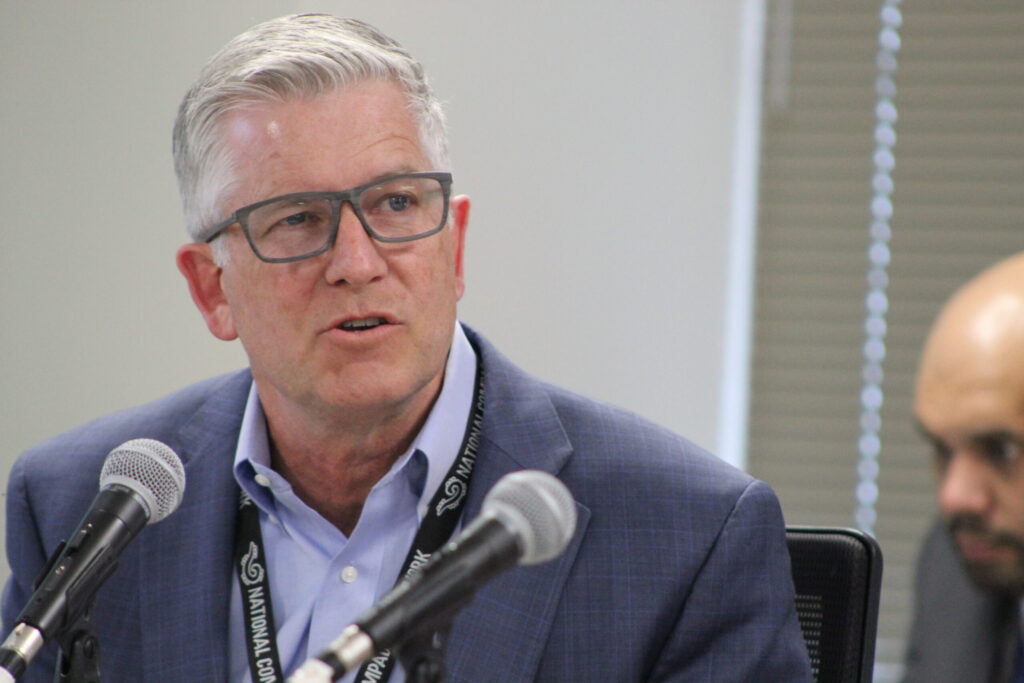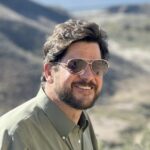A new lease on life for Colorado’s wildlife | OPINION


In the late 1960s and early 1970s, my single mother found herself raising three rambunctious boys in Aurora. She didn’t have much money, but she managed to save enough each year to take us to the YMCA Camp of the Rockies near Estes Park for a week each summer. There, we lived in cabins, inhaled the juniper and pine trees, rode horses, caught trout from a nearby pond with Zebco rods and reels and salmon eggs, and learned about Colorado’s magnificent and diverse wildlife. Those brief immersions into the outdoors filled us boys with a lifelong appreciation for all things wild.
But as most of us know, with climate change and the march of human development across the landscape, we are losing nature bit by bit. More and more species are in decline. Today, around the world, a million are headed toward extinction. According to the American Bird Conservancy, the population of adult breeding birds across the United States and Canada has declined by 2.9 billion in a single human lifetime. The title prophecy of Rachel Carson’s famous book on ecology, “Silent Spring,” is coming to pass.
Stay up to speed: Sign up for daily opinion in your inbox Monday-Friday
The good news is there is still a lot that we can do to reverse these trends. Americans have recovered bald eagles and peregrine falcons once headed toward extinction due to the use of the pesticide DDT. Colorado voters in 2020 agreed to bring back the gray wolf and Colorado Parks and Wildlife (CPW) has done an outstanding job preparing for, and is now undertaking, the reintroduction. The agency is also writing a Statewide Habitat Conservation and Connectivity Plan that will enhance the ability of many species to survive the long-term debilitating impacts of climate change. It is supporting the work of regional Recreation and Conservation Roundtables?????????????????????????????, whose efforts can help deconflict backcountry recreation and the needs of wildlife. It is taking the lead in restoring wolverines to the state. And it is supporting the enactment of the federal Recovering America’s Wildlife Act (RAWA), which will provide millions of dollars to states for species recovery. In short, the agency is making extraordinary strides in ensuring a bright future for Colorado’s wildlife.
And recently, a new non-profit organization called the Colorado Nature League (CNL) was established to further promote the recovery of our state’s rare, threatened and endangered species. This coalition of progressive wildlife organizations will seek to drive more investment in habitat conservation and ensure the best available science is used to manage, conserve and recover species in need of help – something that is urgently needed. As such, CNL will be a positive catalyst for improving the management, recovery and stewardship of Colorado’s endangered wildlife.
We still have a long road ahead, but it is beginning to feel like we can get there. In 2025, when CPW updates its State Wildlife Action Plan (SWAP), it needs to take a long, hard look at its existing assumptions for managing the state’s 159 species in serious decline – including wolverines, Gunnison sage grouse, golden eagles, Colorado River cutthroat trout, peregrine falcons, burrowing owls, bighorn sheep, lynxes and American pikas – and update those plans using the best available science, even in the face of objections from special interests that bristle at being told they can’t develop someplace or other. Below are examples of three opportunities to make an immediate positive impact:
Sage grouse
A key to preventing the extinction of both Gunnison and greater sage grouse is protecting their leks – the areas where the birds meet each spring to display and mate and in the vicinity of which females nest and raise young – from development. The best science indicates the birds need a minimum 3-to-5-mile buffer to protect the lek from development. Yet, Colorado Oil and Gas Conservation Commission’s 1,200 Series rules only consider high-priority habitat for greater and Gunnison sage grouse to be within a meager 1-mile radius of the lek. The 2020 combined federal/state recovery plan for the bird focuses primarily on protecting habitat within a 0.6-mile radius around the leks. Given the imperiled status of the bird today, current protection and recovery efforts clearly are not working. CPW, OGCC, the Fish and Wildlife Service and other federal agencies should consider collectively establishing a firm, protective 4-mile radius lek buffer – without exceptions – around all sage grouse leks to protect them from development and thus give the birds a fighting chance to recover.
Beaver
With the steady decline in snowpack due to climate change, Colorado would benefit enormously by restoring a much larger population of beavers across the landscape to improve water storage, carbon sequestration, and wildlife habitat. Yet, Colorado still allows the lethal trapping of beavers for seven months of the year and beavers can be shot year-round as a so-called “nuisance” species. It makes little sense, especially when one considers that beavers could be live-trapped and relocated if they are creating challenges for landowners.
Bighorn sheep
One of the most serious threats to our iconic bighorn sheep, the centerpiece of the CPW logo, is disease transmitted by domestic sheep. So, it is important to keep them separated in the wild. Nevertheless, in 2014, DNR signed a memorandum of understanding (MOU) between the USFS, BLM, Colorado Woolgrowers, Colorado Department of Agriculture, and CPW that prohibited CPW scientists from recommending to the BLM and U.S. Forest Service that domestic sheep be taken off certain public lands to protect bighorn sheep. Though that MOU expired in 2019, CPW should now actively engage with federal agencies to limit the presence of domestic sheep on federal lands occupied by bighorn sheep.
And ultimately, Colorado needs to consider changes to the basic funding model for wildlife management to give CPW more money to recover our rare and endangered wildlife – species critical to a healthy ecosystem and that give us joy simply by watching them do their thing in their nature. The kids today who fall in love with nature as I did at places like the YMCA Camp in Estes Park, or on a camping trip with their parents in a national forest or national park, deserve a future filled with healthy, abundant wildlife.
Eric Washburn is a fifth-generation Coloradan and big-game hunter who lives in Steamboat Springs.












